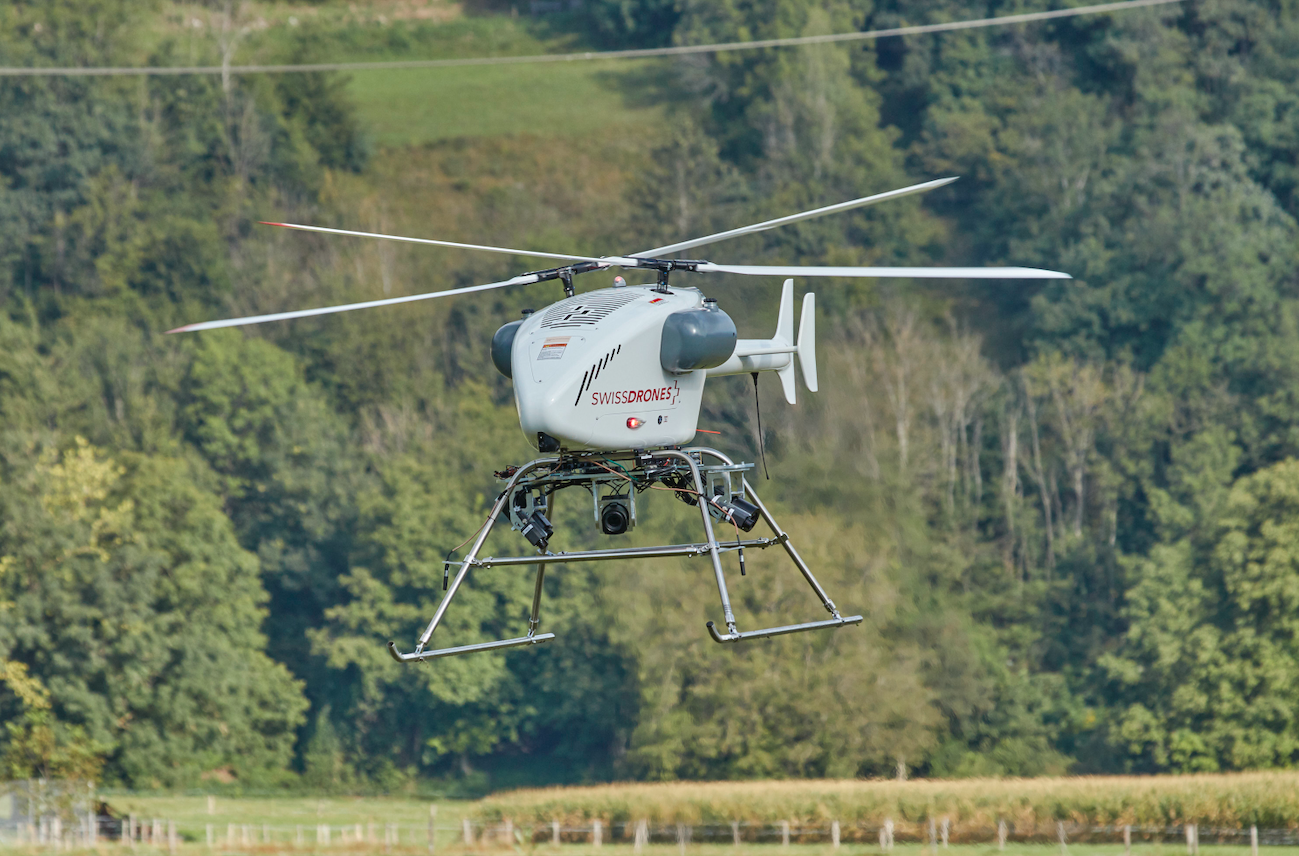Missions are possible under difficult or dangerous circumstances (e.g. bad weather, darkness, flying over hostile or otherwise unsafe areas) when manned operations are not feasible.
The VTOL (vertical take-off and landing) system is highly cost-effective compared to manned aerial solutions, and requires less training to operate confidently. The rapidly deployable aircraft is transportable by van and can be prepared for flight by a team of two in just 15 minutes.
The SDO 50 allows CO2 emission reductions of up to 95% compared to manned helicopters.







A high-endurance, multi-mission uncrewed helicopter deliveringprecision, versatility, and reliability for the most demanding operations.

Performance figures reflect the aircraft in minimum configuration under ISA conditions, including average fuelconsumption and standard reserves. Performance range (point-to-point) assumes continuous communication coverage, based on the aircraft’s dry operating mass. SwissDrones is not liable for differences between expected and actual performance.

A variety of high-end sensors have been integrated with the SDO 50. With a useful payload of more than 20 kg, several payloads can be integrated at the same time.
The SDO 50 system can be operated as a permanent installation, as part of a ship operation, be made ground transportable to the venue of mission by means of a van or be deployed in combination with helicopters.
We offer profound know-how and experience in obtaining regulatory approval to fly BVLOS (beyond visual line of sight) operations in different countries.
The SDO 50 offers a high-end autopilot for pre-programmed and executed flight missions equipped with accurate sensors and redundant systems.